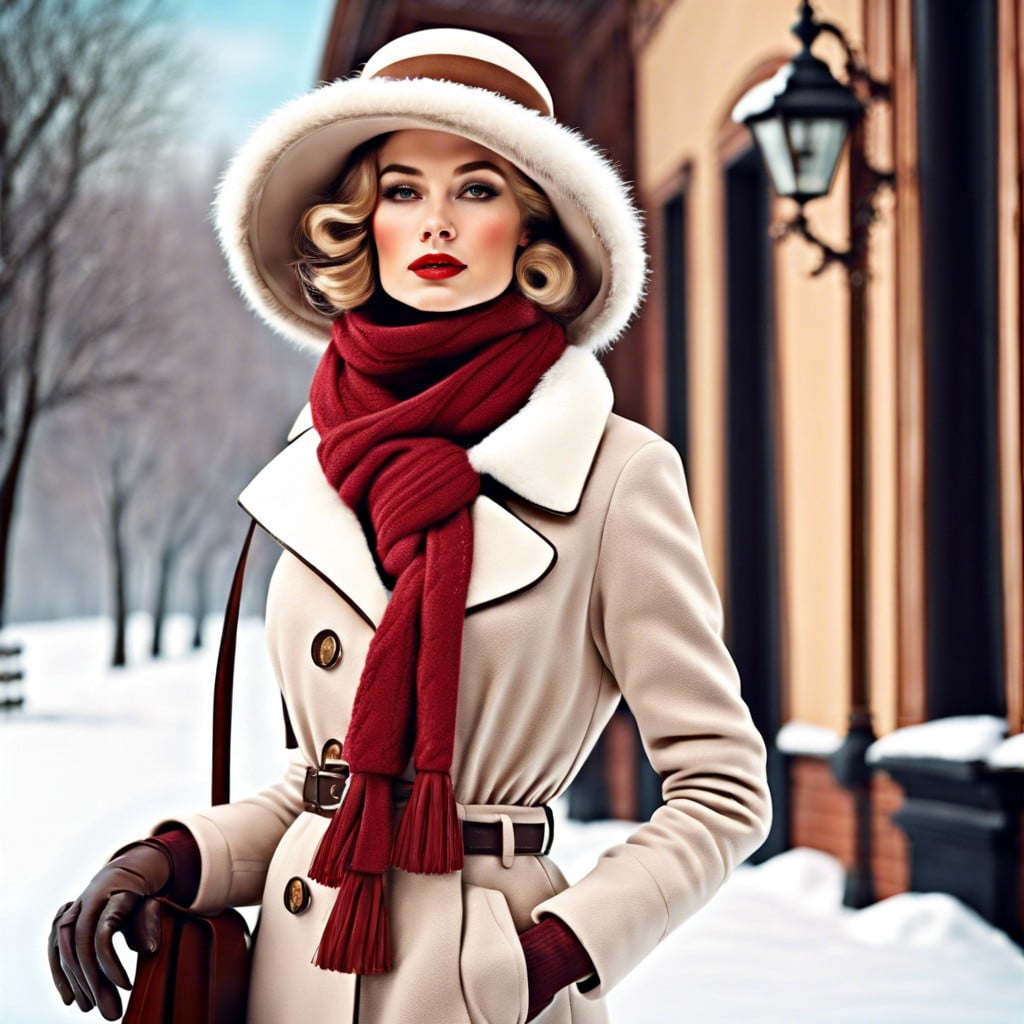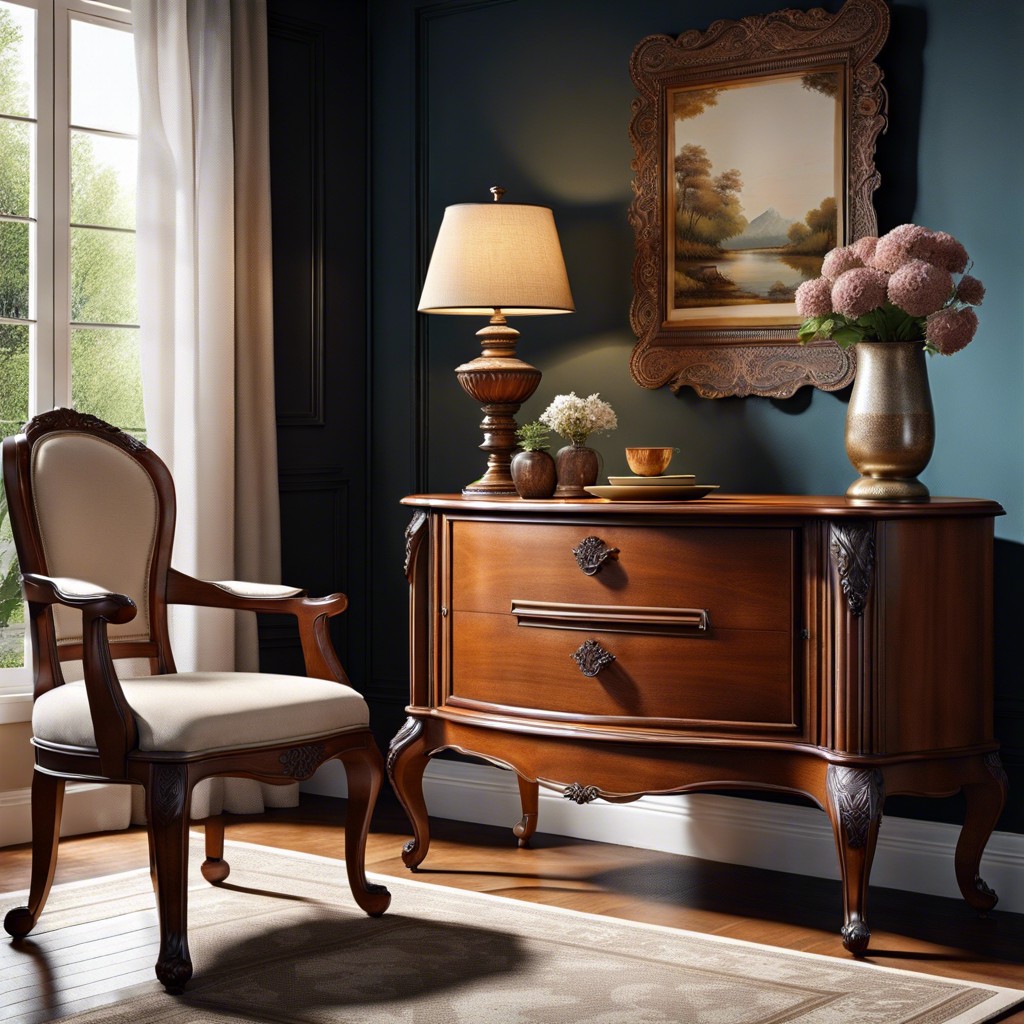Last updated on
In this buying guide, you’ll learn how to select the perfect vintage lipstick holder, assessing its style, quality, and authenticity.
Key takeaways:
- Vintage lipstick holders reflect the history and evolution of cosmetic trends.
- Materials and craftsmanship reveal the era’s social and economic conditions.
- Iconic designs from different eras reflect societal values and technological advances.
- Beginners should start small, educate themselves, check condition, network, and budget.
- Distinguishing between authentic vintage pieces and replicas requires careful examination of materials, craftsmanship, maker’s marks, and wear.
History of Vintage Lipstick Holders

Lipstick holders, quintessential to any refined vanity display, trace their origins back to the early 1900s. Originally considered luxury items, they were crafted from precious metals like silver and gold, reflecting wealth and status. As the roaring twenties ushered in an era of glamour and decadence, lipstick holders became more ornate, often adorned with intricate designs, enameling, and even gemstones.
The evolution of materials took a novel turn during the 1930s and 1940s, with the introduction of plastics and Bakelite. This allowed for mass production, making holders more accessible to the average woman and incorporating a broader color palette and more playful designs.
In the post-war 1950s, the focus shifted back to luxury with the addition of features like built-in mirrors and clasp closures, enhancing both functionality and elegance. These holders not only stored lipstick but also became a symbol of femininity and self-expression through the decades.
Materials and Craftsmanship in Vintage Lipstick Holders

Vintage lipstick holders offer a glimpse into the detailed craftsmanship of past eras. Crafted from a variety of materials, each type adds its own charm and durability. Silver and brass were popular for their robustness and ease of engraving, allowing for intricate patterns that could symbolize personal or cultural stories. For those seeking a touch of luxury, enamel and gold were used, sometimes encrusted with precious gems to reflect status or personal adornment trends of the time.
The construction of these holders also highlights the era’s technologies and artistic priorities. The etching, filigree, and cloisonné techniques not only reveal the makers’ skills but also the aesthetic preferences of different periods. Understanding these materials and methods provides valuable insights into the era’s social and economic conditions, making each piece a small yet profound token of history.
Iconic Designs From Different Eras
The Roaring Twenties brought us the first “swivel-up” tubes, transforming lipstick from dab-on creams to an elegant accessory. It was common to see holders crafted from sterling silver or enamel, often bearing art deco motifs, exuding glamour and chic.
Moving into the 1950s, post-war prosperity influenced designs incorporating gold tones and intricate filigree, symbolizing luxury and femininity. These pieces frequently showcased motifs such as florals and birds, appealing to the era’s aesthetic preferences.
By the 1960s and 70s, with the rise of individualism and the youth culture revolution, holders became more colorful and whimsical. Materials like plastic and brighter metals were utilized, reflecting the optimistic spirit of the time.
Each era’s design not only held lipsticks but also mirrored its societal values and technological advances, offering a fascinating glimpse into the past. Remembering and collecting these icons continues the legacy of not just makeup but also the artifact as a societal canvas.
Collecting Tips for Beginners
Start small; a skyscraper wasn’t built in a day, and neither should your collection be. Dive into more accessible and less pricey pieces to gain an understanding of what truly tickles your fancy.
Educate yourself on the hallmarks of authenticity. Dedicate time to reading up on brands, eras, and designs. Remember, knowledge is power, and in the world of vintage collecting, it also prevents you buying a dud.
Check the condition meticulously. Peeling, rust, or too much restoration can significantly diminish a piece’s value. If possible, inspect the item physically. Internet images can be as deceiving as a magician’s tricks.
Network with other collectors. Attending auctions, joining forums, and participating in antiquities groups can provide invaluable insights and lead to surprising discoveries.
Finally, establish a budget. It’s easy to slip down the rabbit hole and emerge not as the proud owner of a vintage collection, but as someone desperately in need of a financial advisor. Prioritize and proceed with prudence.
How to Identify Replicas Vs. Authentic Pieces
Distinguishing between authentic vintage lipstick holders and replicas can often be as intricate as the designs on these charming artifacts. Start by examining the material; older pieces typically feature higher quality materials such as silver, brass, or even gold. Replicas often use cheaper alternatives and lack the fine craftsmanship of their genuine counterparts.
Inspect the craftsmanship. Authentic vintage pieces usually exhibit superior craftsmanship, with meticulous details and smoother mechanisms for opening and closing. On the other hand, replicas might have uneven finishes or rough edges that betray their modern, mass-produced origins.
Check for maker’s marks or hallmarks, common in genuine antique items. These marks can reveal the manufacturer’s identity, production year, and sometimes the location. A quick Internet search of these marks can provide valuable insights into the piece’s authenticity.
Lastly, consider wear and patina. Authentic vintage items often show signs of use and aging, which can actually enhance their beauty and value. Replicas, however, might attempt to artificially create these effects, sometimes resulting in an overly contrived appearance.
By studying these aspects, you can become more adept at spotting the real treasures from the modern imitations.
Related:




